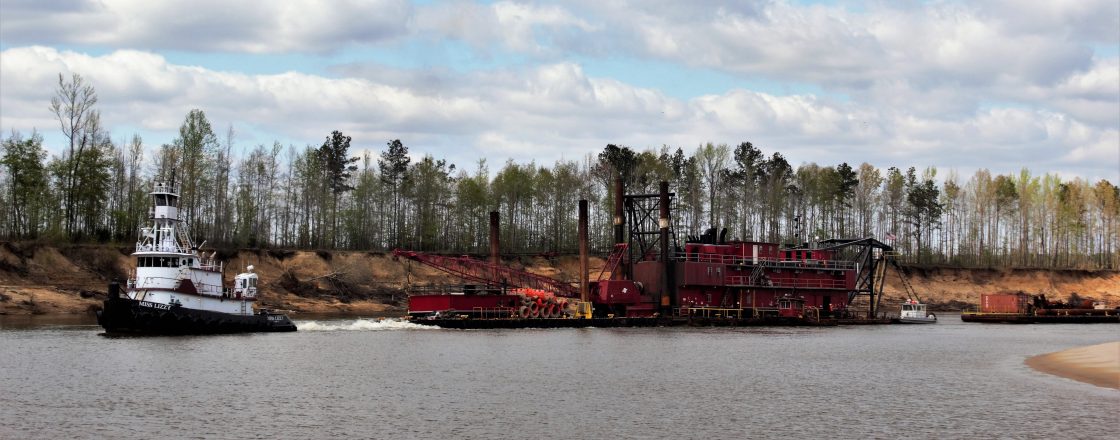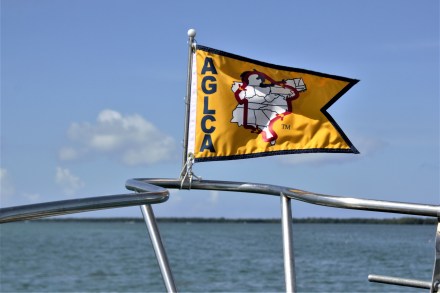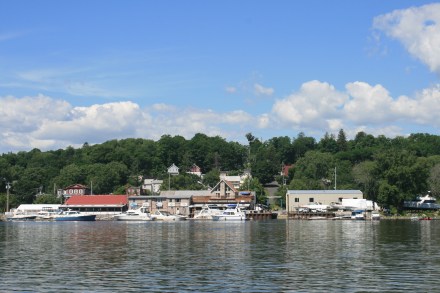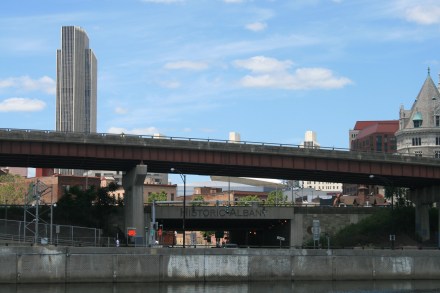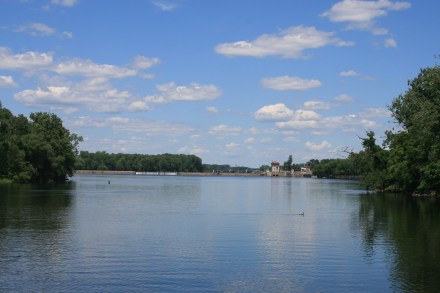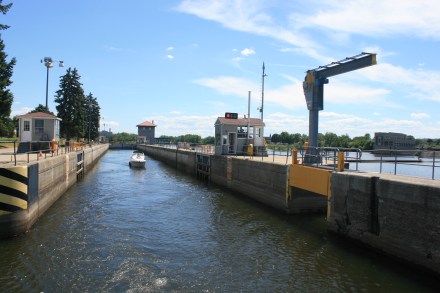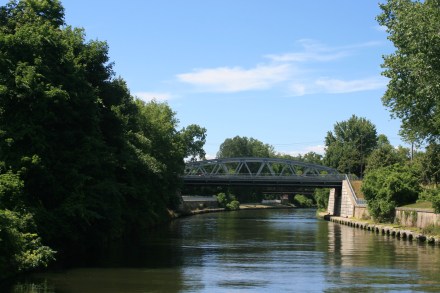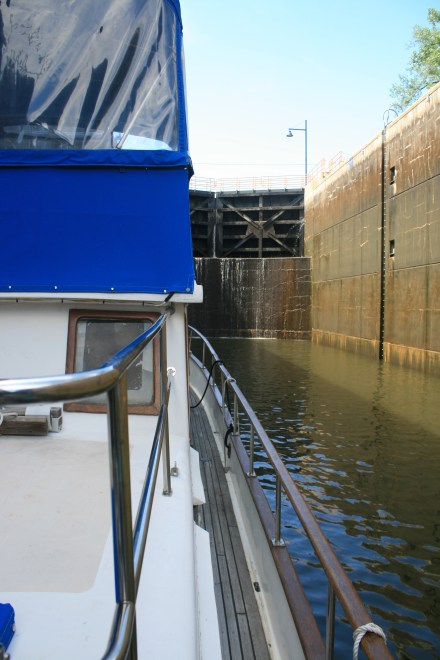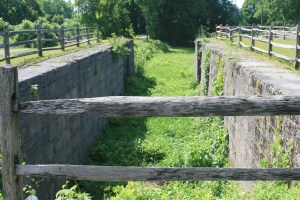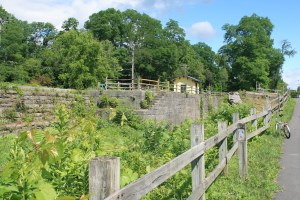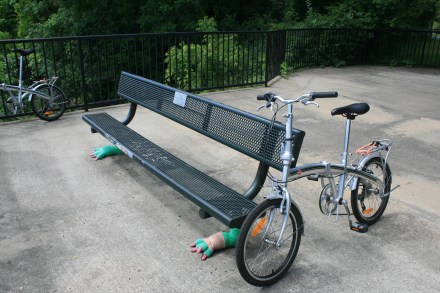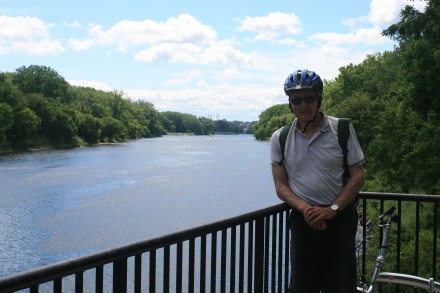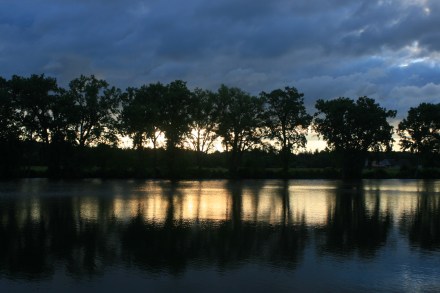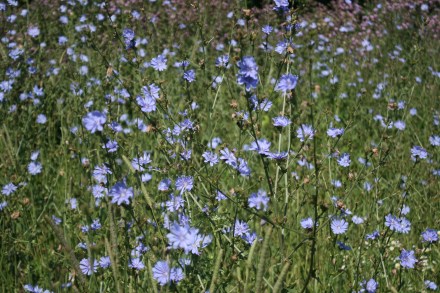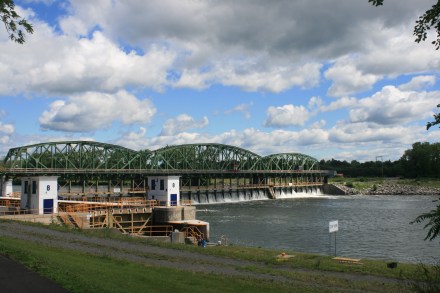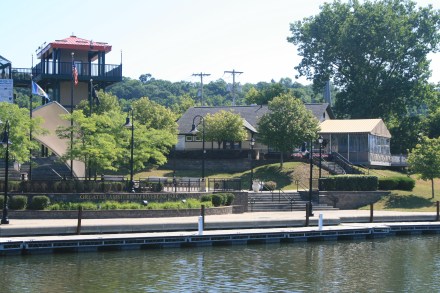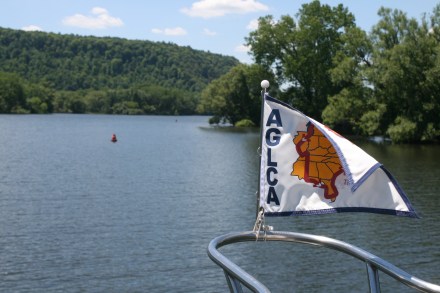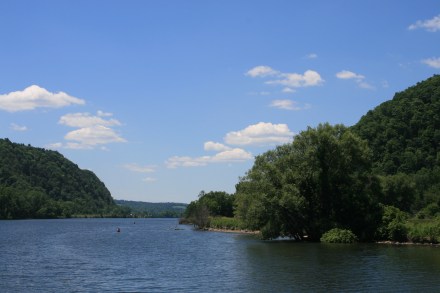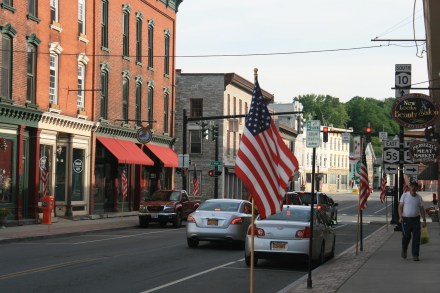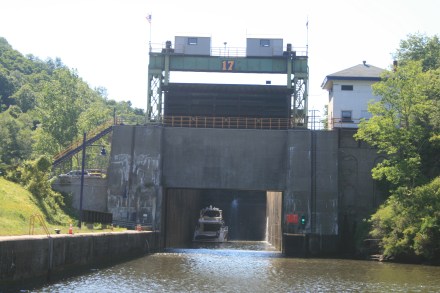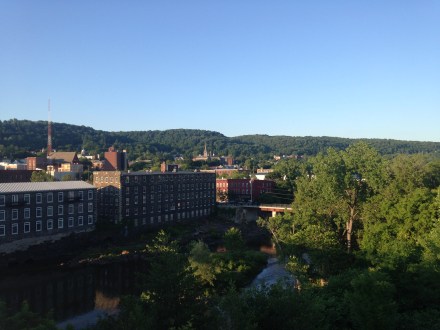By the time we got to Turtle Cove Marina at Tarpon Springs, about 10 days’ dirty washing had accumulated. I’m not normally so slovenly, but we had had no opportunity to do it.
It’s usually a chore, but the laundry at Turtle Cove was conveniently situated in the clubhouse building which overlooked the swimming pool. So we passed a pleasant afternoon doing the washing.
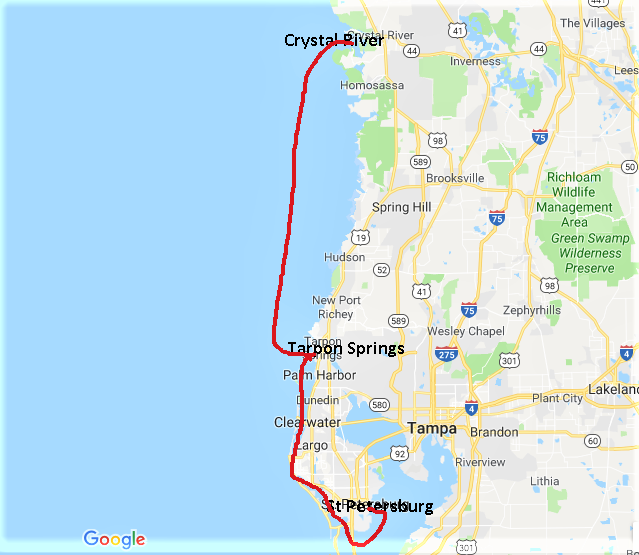
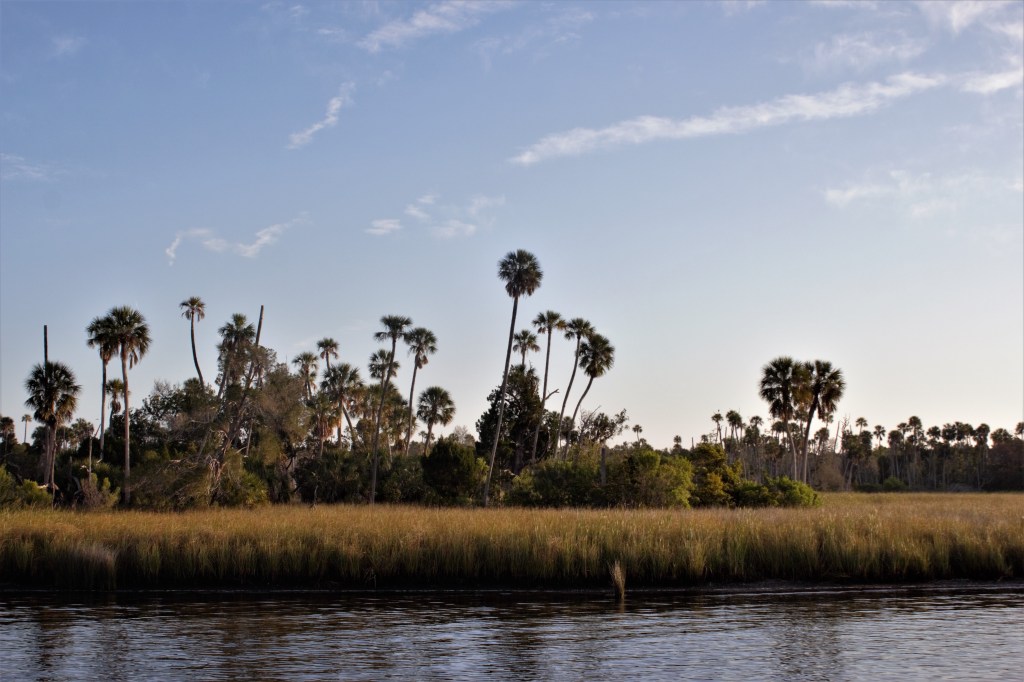
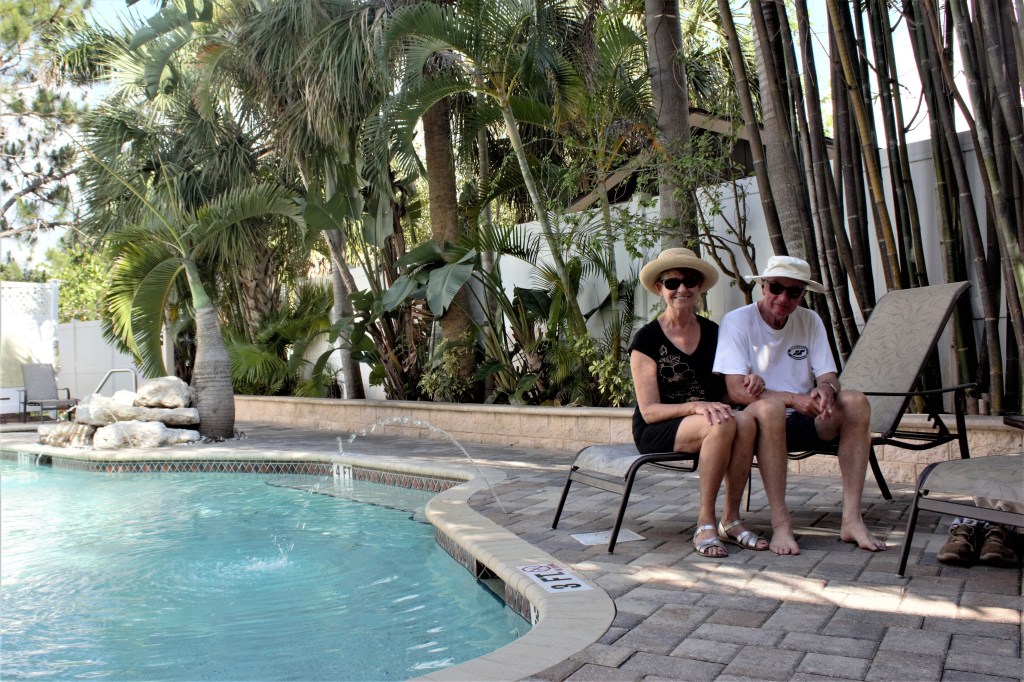
Tarpon Springs was described in the guide-books as the nearest thing to Greece, outside Greece. Rather surprisingly, this description turned out to be quite accurate. Greek people came here 100 years ago to work in the sponge industry, and still do. They brought their culture and cuisine with them. The town centre was within easy walking distance of the marina so we wandered down to have a look in the shops and have coffee in one of the Greek cafes. We bought amazing bread and baklava from a Greek bakery. There were even kafenions with shouty Greek voices emanating from their dark interiors, where tourists didn’t go.



In the evening, we ate at the Rusty Bellies’ Waterfront Restaurant. It was popular and packed out, but it wasn’t a hardship to sit in the shade with our margaritas while we waited for a table.

From Tarpon Springs, we could have made a straight run through Clearwater to finish our Loop at St Pete, where it all started more than 5 years ago. We had bought Carina at Treasure Island, Clearwater, and taken her across to St Pete where we’d spent a week equipping her before we had actually set off. We’d come to like the city during that first anxious week of getting everything ready and wondering if we could actually do this Loop thing. St Pete felt like the start of our Loop, and we decided that was where it would finish, where we would announce to the world that we’d crossed our wake, and celebrate appropriately.
But I had noticed, in Skipper Bob’s book, a passing reference to Caladesi Island. It’s an unspoiled island, accessible only by boat, but there’s a marina there run by Park Rangers. There’s a small cafe, but no bars, no tourist shops, and no grocery stores. We had time to go there.
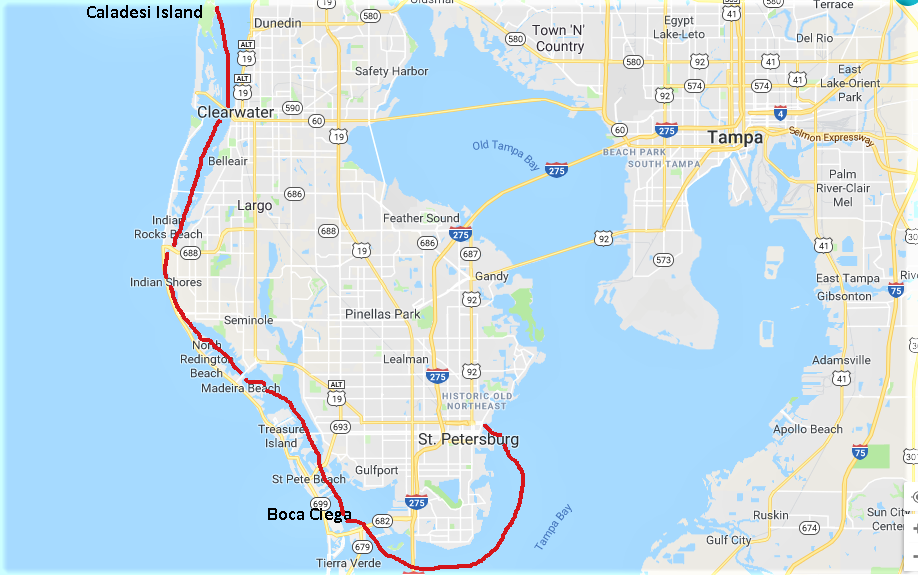

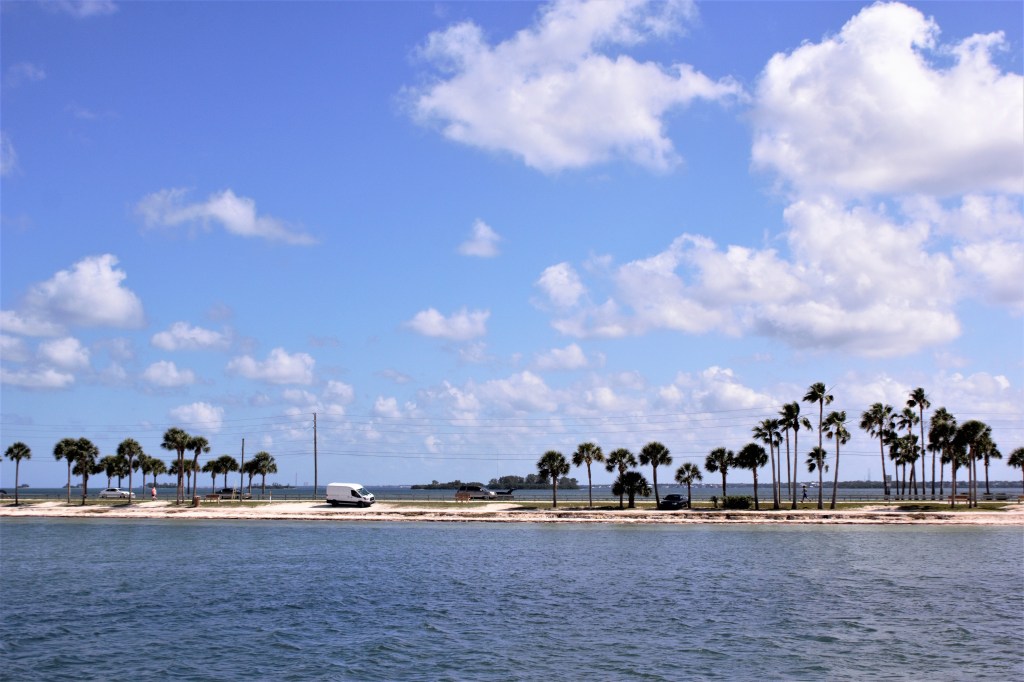
Caladesi is rather special. The marina is hidden away down a system of channels that pass through the mangrove. ‘Channelization of mangrove areas was done before the state park was established. This type of land alteration would not be allowed under today’s management practices,’ the Island Trail Guide rather primly states.
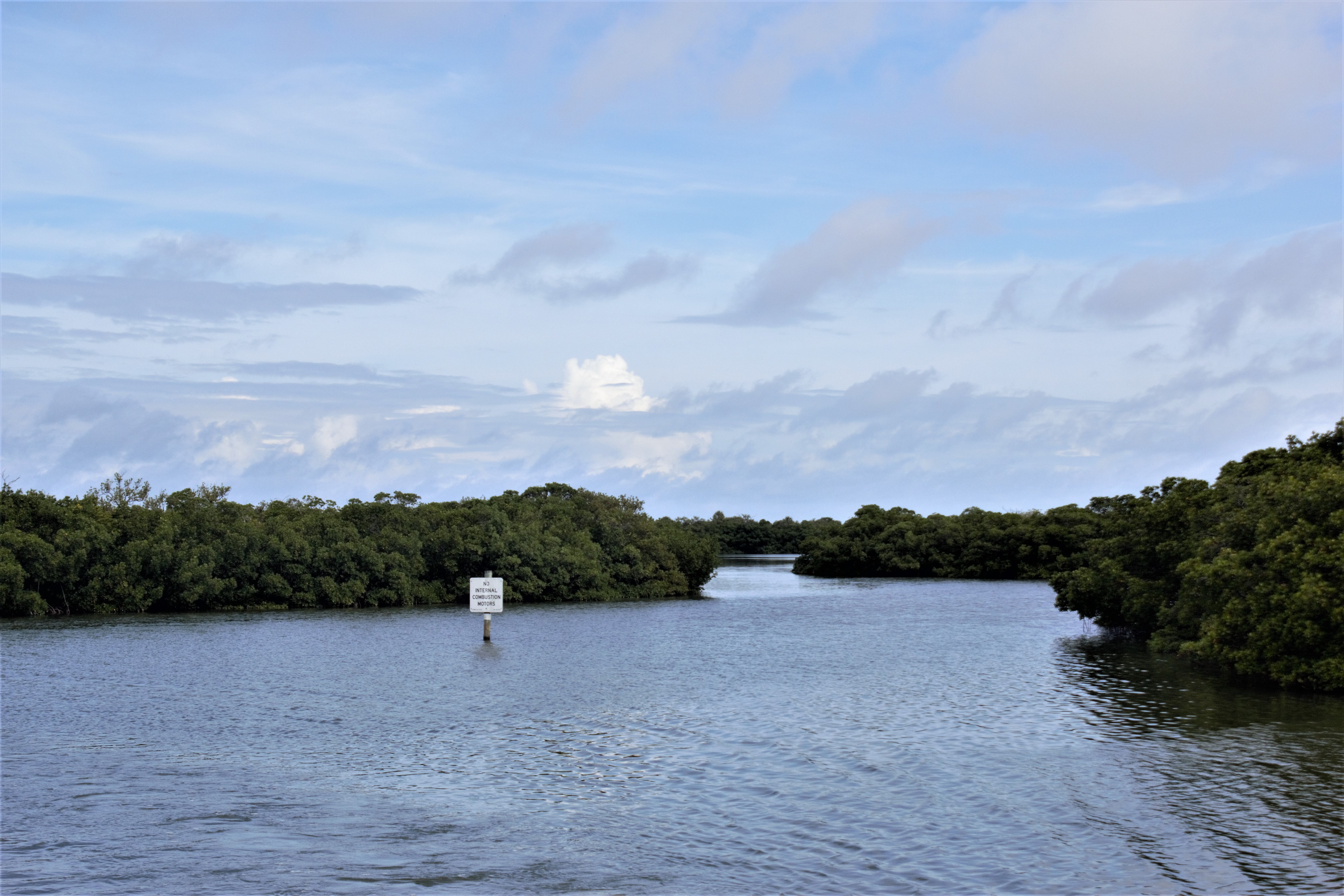

We got there at lunch time and headed over to the beach, a 5-minute walk away through the dunes. Ferries come from Honeymoon Island and elsewhere, so we didn’t have it quite to ourselves. For a not inconsiderable fee, you can hire a beach umbrella. The State Parks are not above making money out of their visitors, but really there was no choice in the matter. It was getting hot out in the sun.
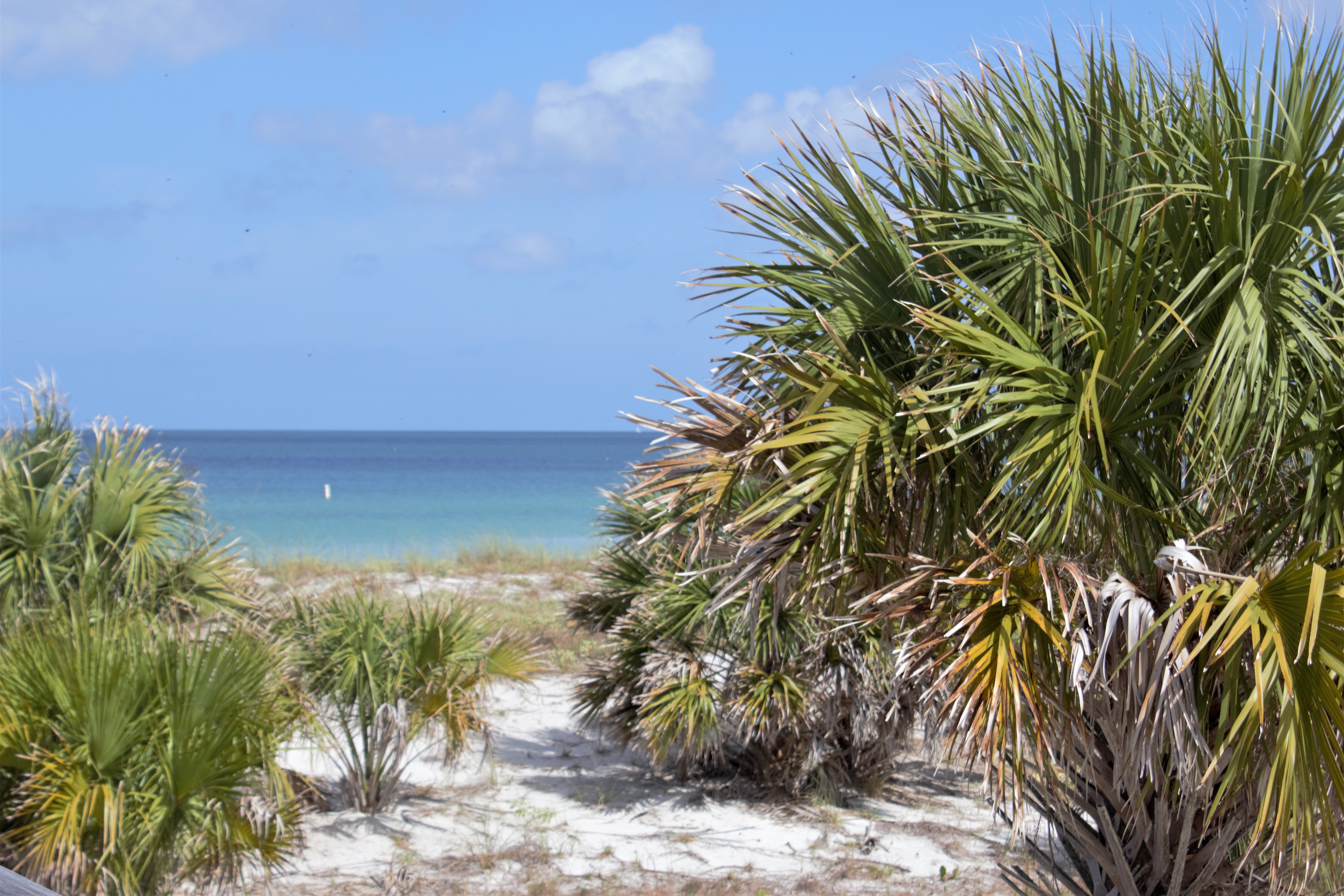

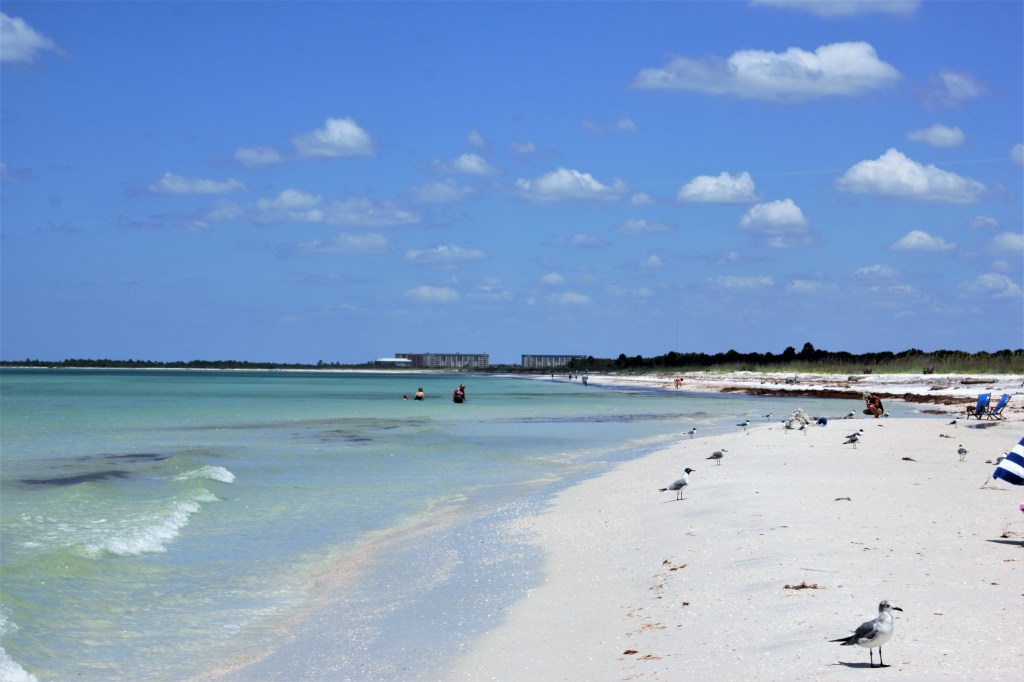
The next day we walked the Island Trail, through 2.5 miles of the interior of the island and finishing on the beach, passing from the coastal strand to a pine flatwoods community. Unfortunately the coastal hammock part of the trail was closed because of prescribed burning, a land management tool which reduces the risk of wildfires and recycles nutrients into the soil.
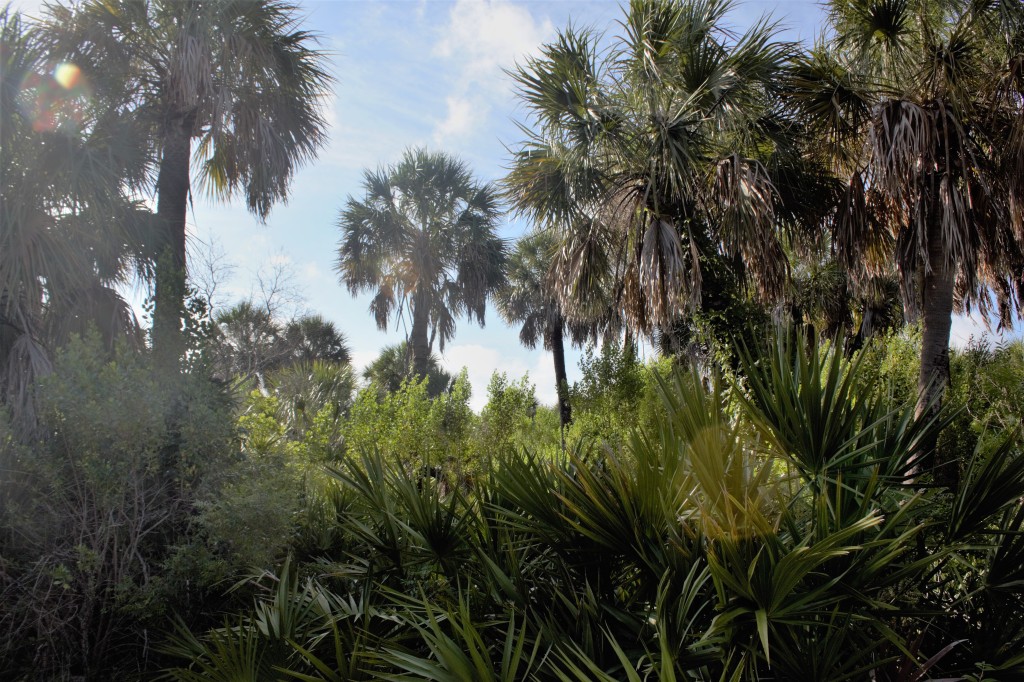

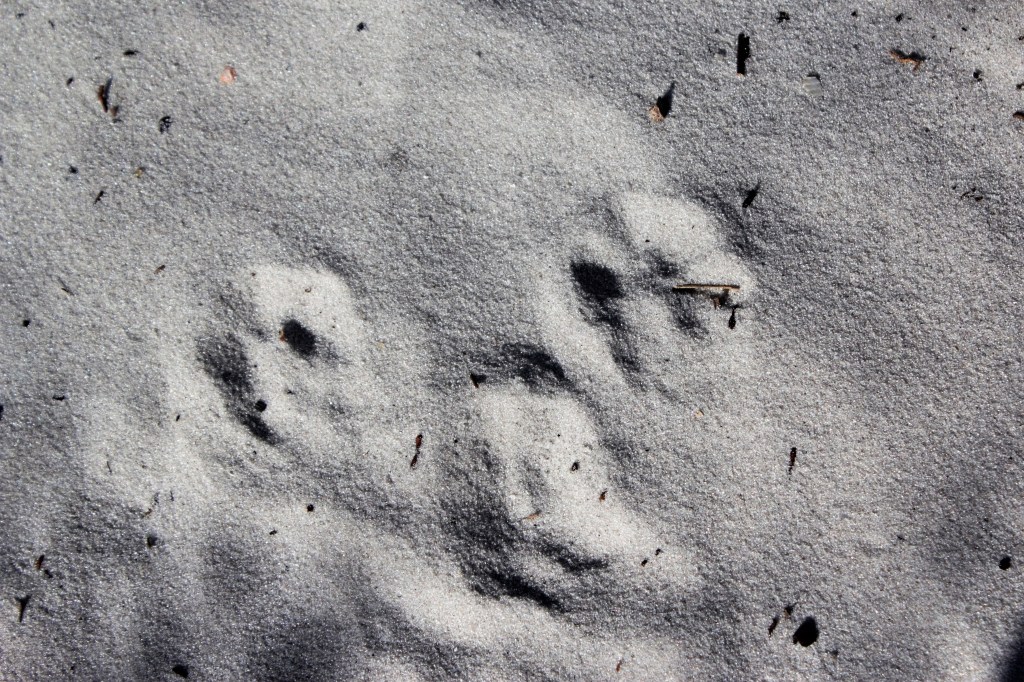

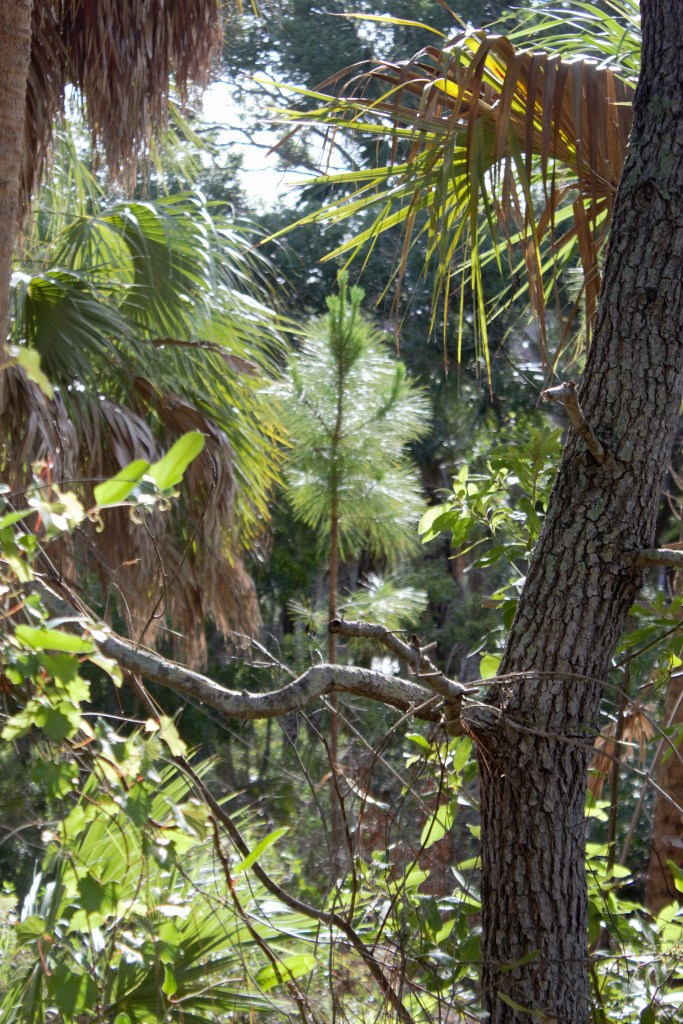
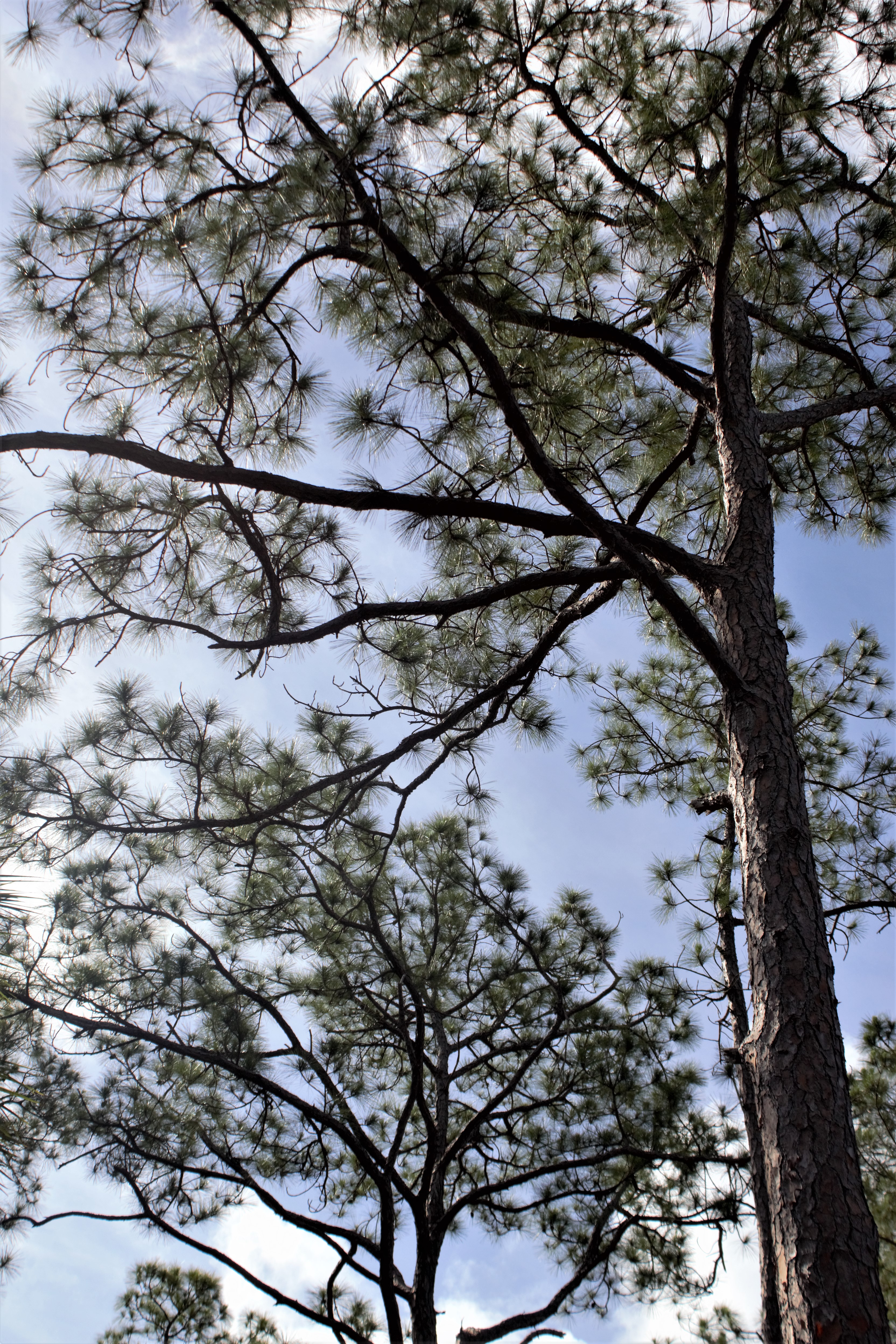
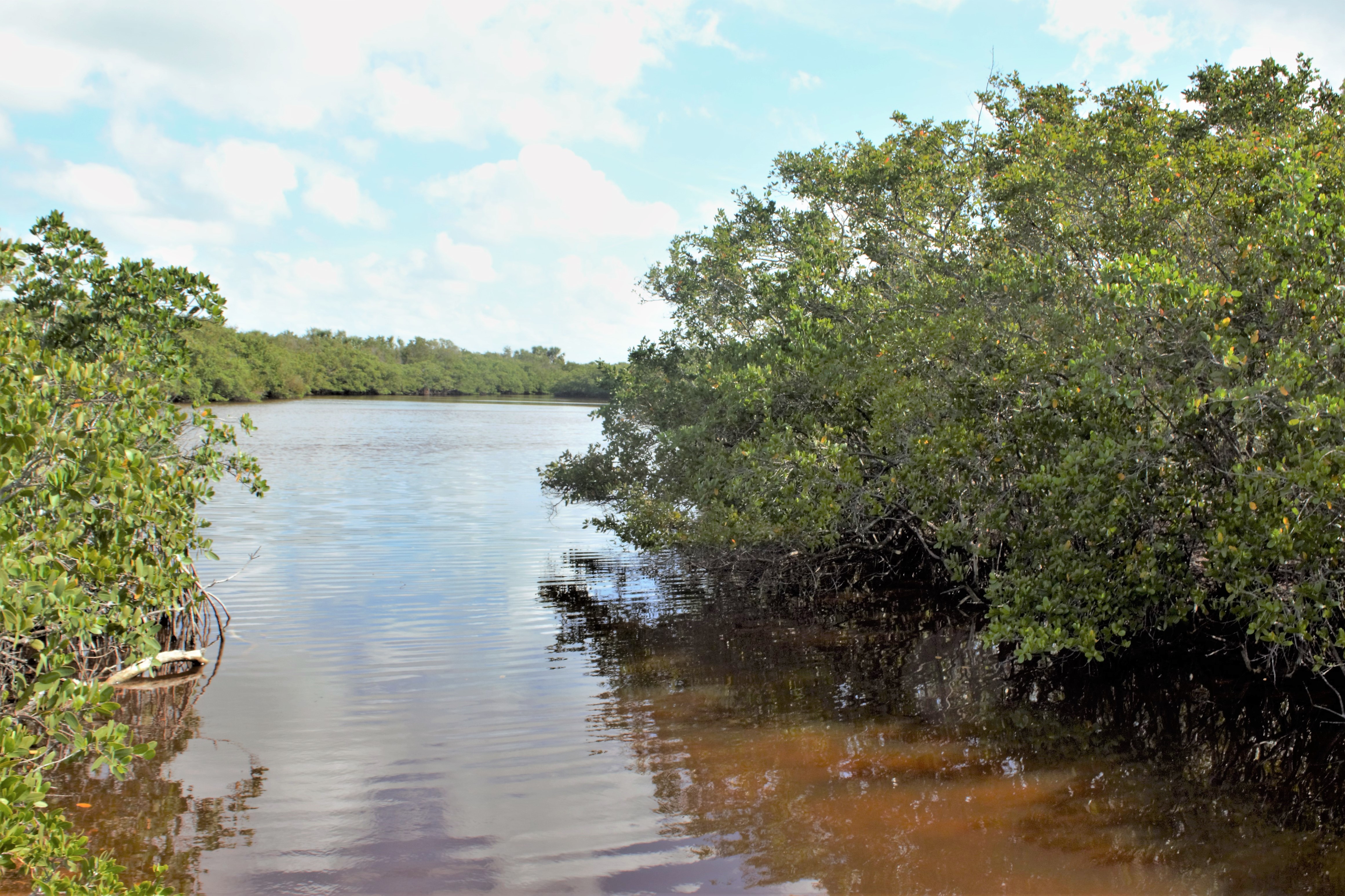
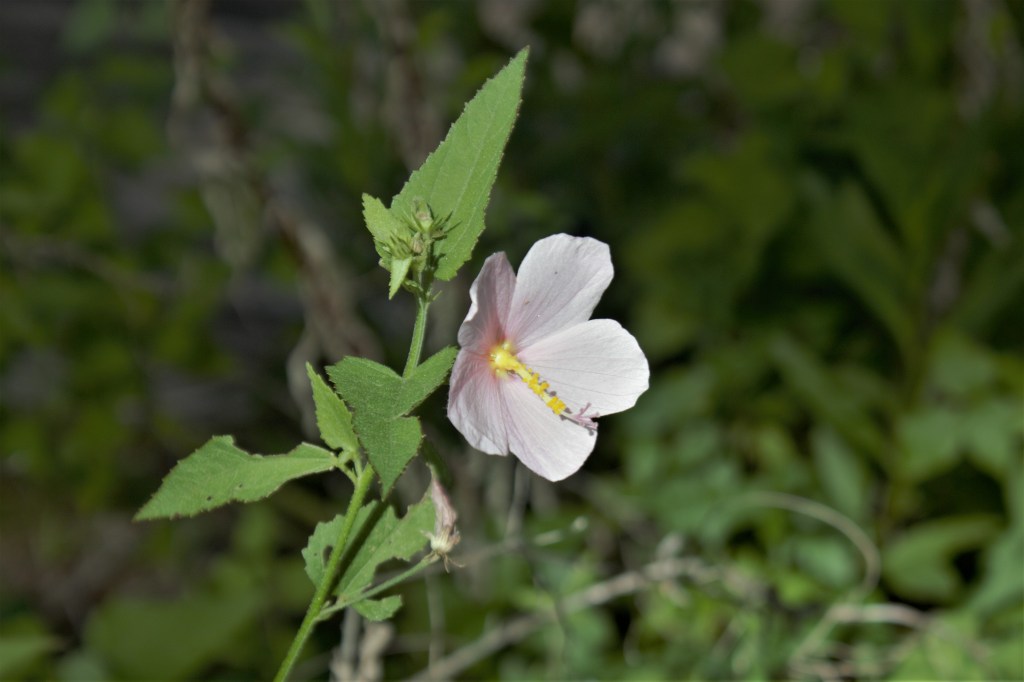

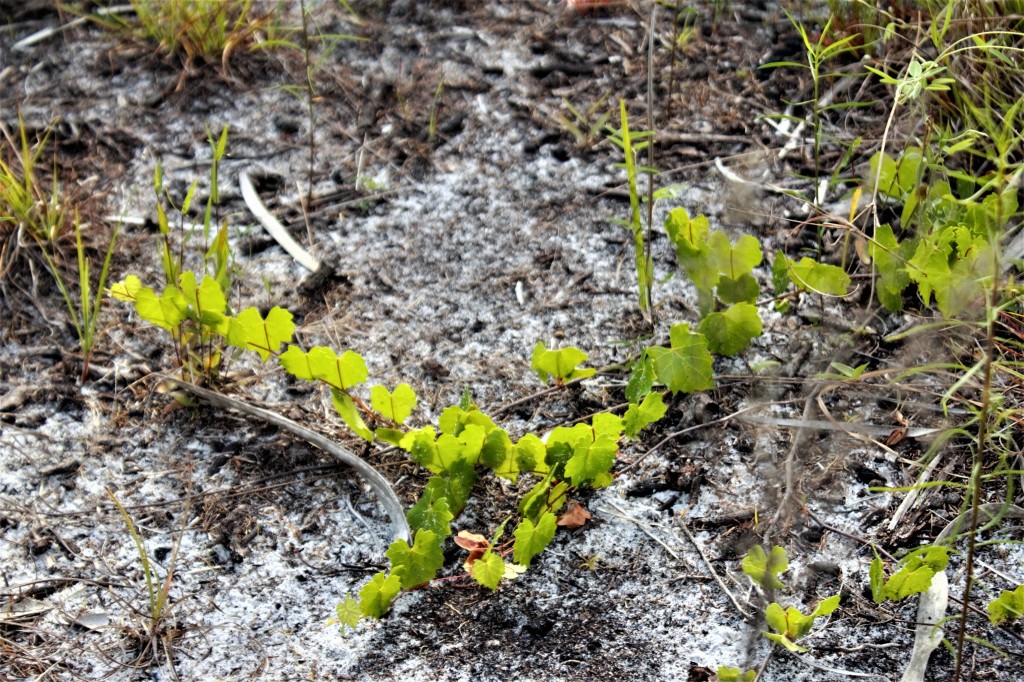
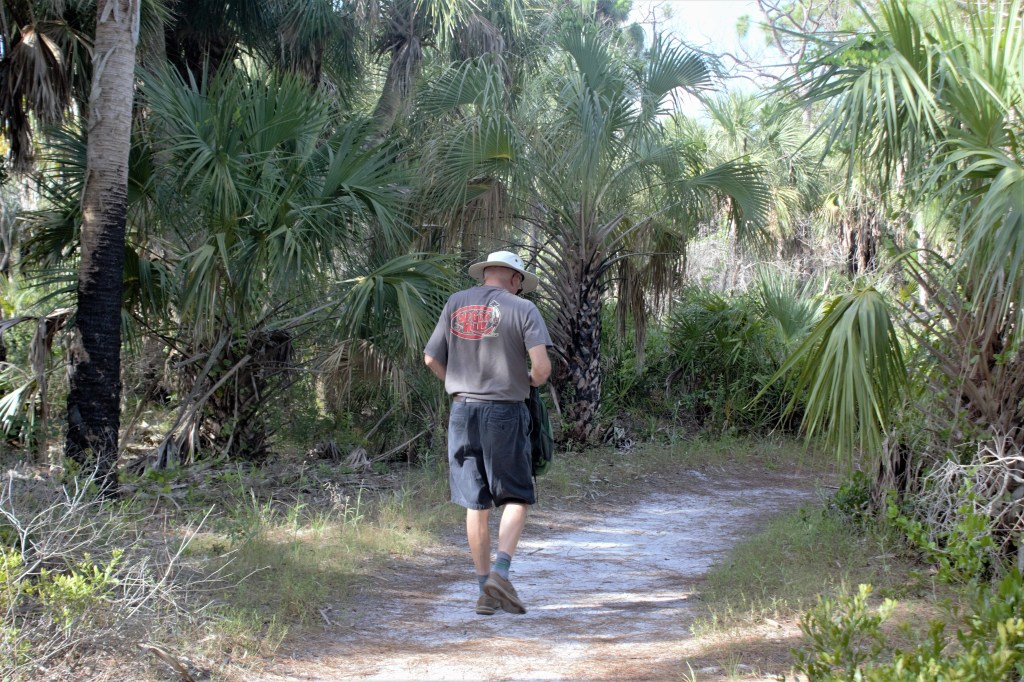
The beach was almost deserted. There was a severe thunderstorm forecast, and the ferries weren’t running.



We left Caladesi for St Pete, but we had a night at anchor at Boca Ciega first.
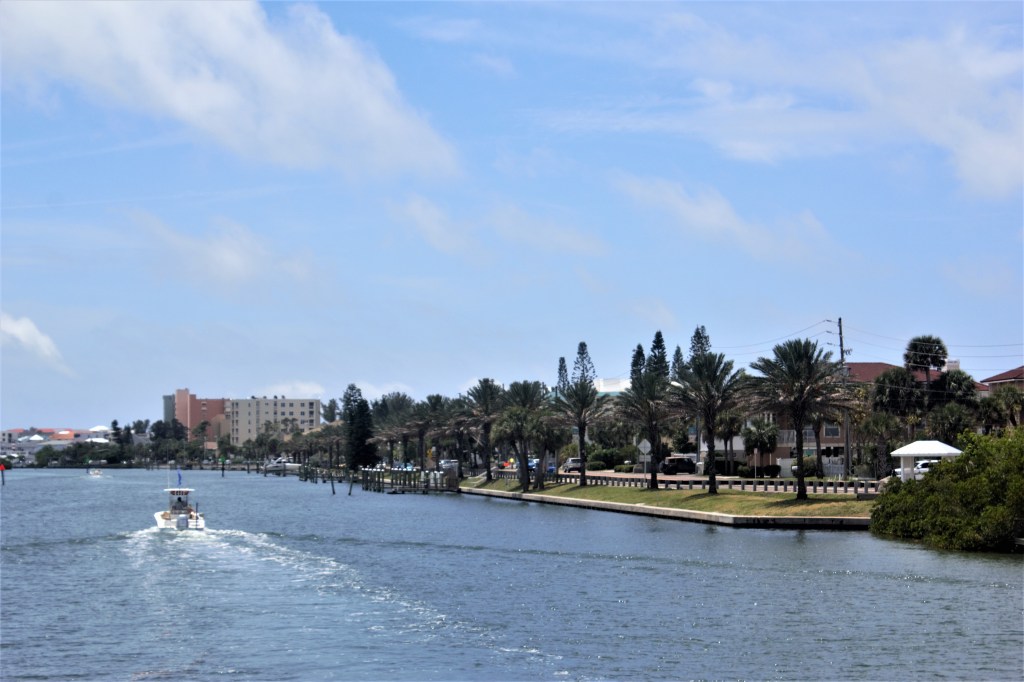
As we passed through Clearwater and Treasure Island, we tried to identify the inlet where Carina had been docked when we first bought her. We think this one was it, with a new boat tied up in Carina’s place.


We couldn’t help feeling excited as we approached St Pete, and saw the entrance to the familiar Municipal Marina.

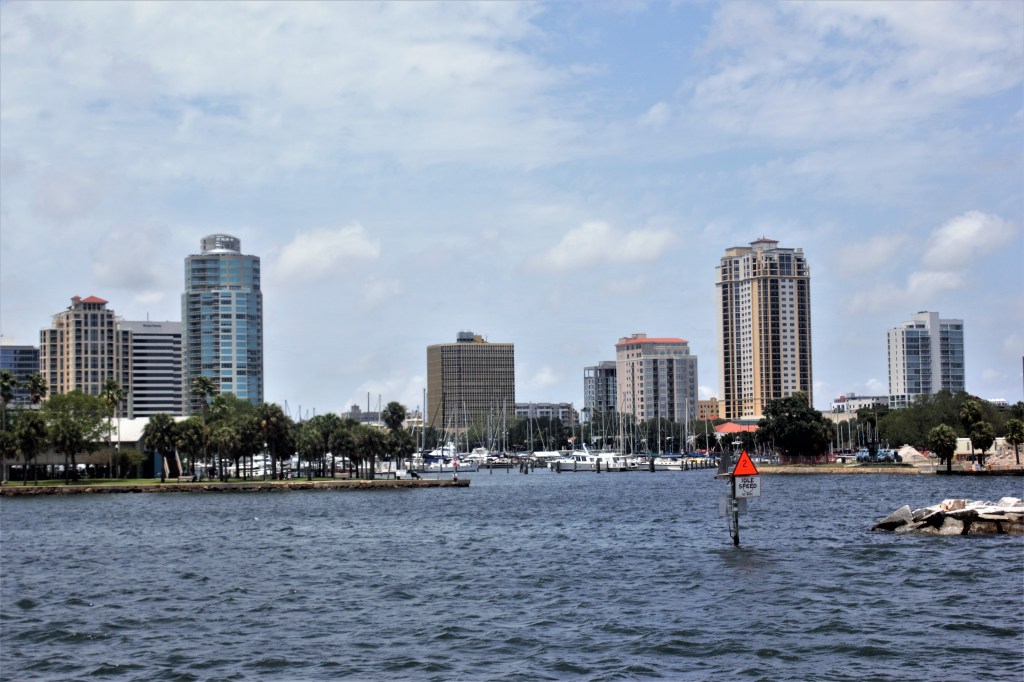
It was quite windy and Ian was worried about docking. Frank, the dockmaster, had assured us that he’d be waiting to take our lines, and he was. As we tied up, I asked about the laundry facilities.
‘Sure, we have a laundry. There’s a lounge there too, with a TV. But you gotta watch Fox News. You’re not allowed to watch CNN. That’s the Communist channel.’
Then, ‘I guess you guys spend a lot of time laughing at our President.’
After five years, we’re getting a bit more used to American humour and the use of irony. But we’re British, and so we couldn’t possibly comment.

It was over. We felt a mixture of sadness, relief, gratitude and euphoria.
As we’d approached the end of the journey, I’d imagined this day. I thought I would go to Publix, get some champagne, possibly buy myself a small, expensive reward for persevering throughout my trials and endeavours, and have a celebration dinner at an upscale restaurant.
We did none of those things. We had lunch on the boat, and eventually we wandered downtown. Ian has an unerring instinct for finding ice-cream shops, and it didn’t let him down. Being in St Pete, it was a posh one. As well as ice-cream, it sold a variety of exotic teas, jams in fancy jars, and other esoteric preserves. Ian had an obscurely-flavoured ice-cream, and I had English breakfast tea, which came in a technical, tetrahedral bag.
As we were leaving, we thanked the waitresses. They thanked us back and wished us a great afternoon. Then one of them remarked on the cuteness of Ian’s socks, and they dissolved into giggles. Of course, it’s not only Americans who find the sight of an Englishman rocking shorts with lace-up shoes and short, striped socks amusing.
In the evening we went to Fresco’s for dinner. It’s a lively waterfront restaurant and bar next to the marina, with good food, a nice atmosphere and it was just right.
We had to wait a few days for our Gold Looper’s flag, which the AGLCA had sent to us at Marina Jack’s in Sarasota.
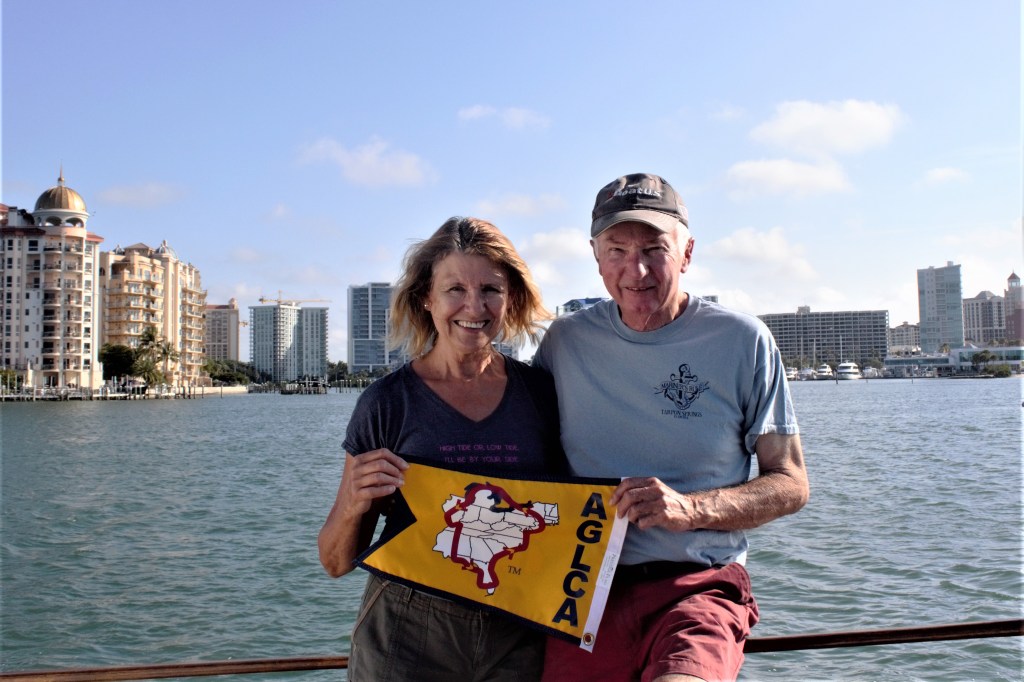
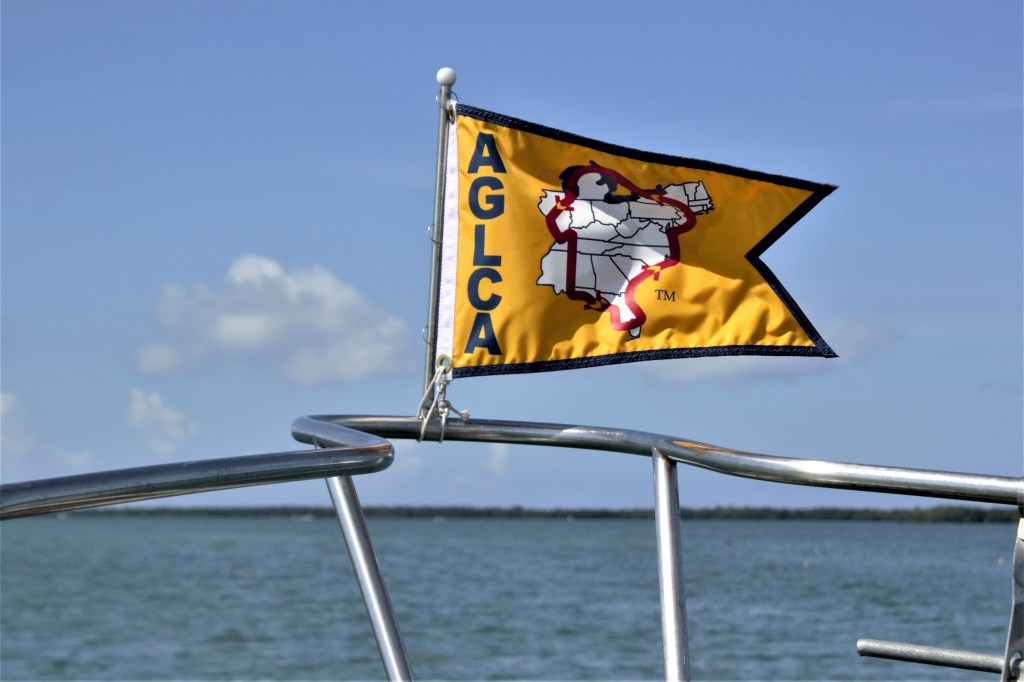
Except that it wasn’t really over. Apart from the fact that we had booked Carina into a boatyard in Port Charlotte for storage during the summer, we had no clue what we were going to do next, either in the short term or the long-term. And we had another 3 weeks before our return to England.
But we have made one decision. Carina is for sale. We’re spending the remaining time revisiting some places in Florida that we liked the first time around, and discovering new ones.
So there’ll be one more blog post after this one, but it seems the right time to thank everyone who has followed me, and especially those who left kind and supportive comments. What started as simply a way of letting people know where we were and what we’d been doing, grew into something a bit more. In the moments of anxiousness, boredom, missing home and our family and friends, of which there were some, having to look for the positive and the funny things to write about, of which there were many, was therapeutic. Thank you for the encouragement.
I should also thank the people we met along the way who helped us, gave us advice and stopped us getting bored with our own company. In particular, Jim and Susan who rescued us that memorable September day on the Illinois River.
And I suppose I should thank the Captain, who takes me out of my comfort zone and gives me all these experiences to write about.
